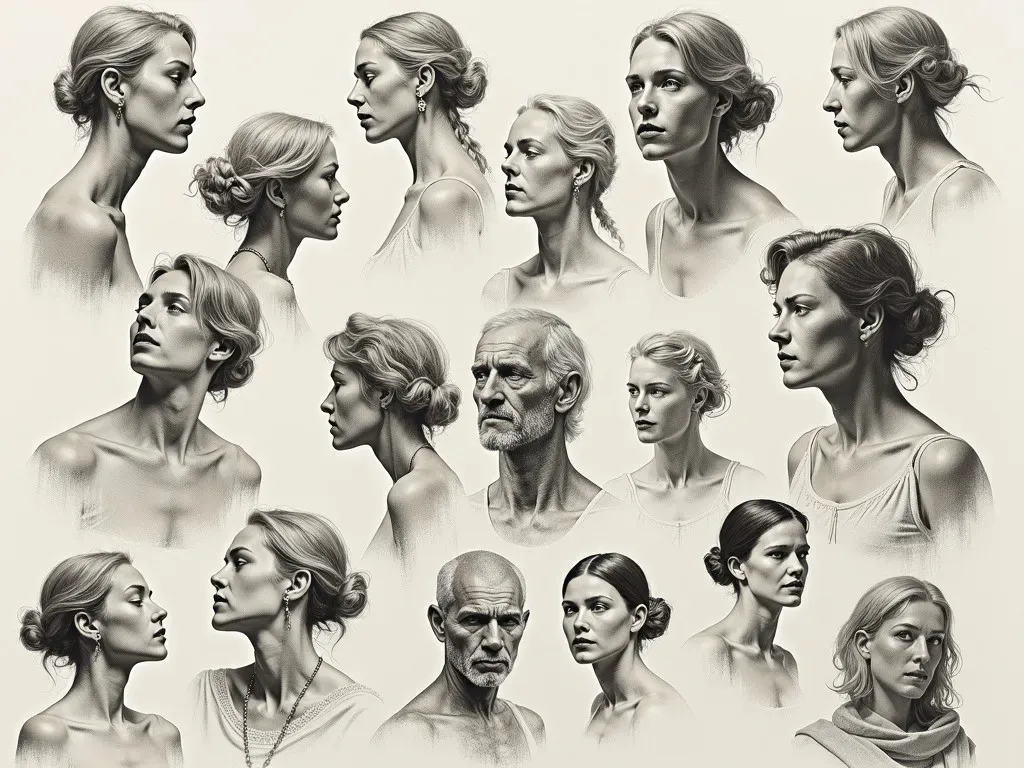Fine art drawings encompass a range of visual art forms that utilize drawing as a primary medium. These artworks vary from sketches to elaborate compositions and can awaken emotions, tell stories, or simply celebrate beauty. Artists often employ various Techniques, styles, and materials to produce fine art drawings, showcasing their talents and individual artistic expressions.
The Evolution of Fine Art Drawings
Fine art drawings have a long and rich history, dating back to ancient civilizations. Early drawings were often created for practical purposes, such as maps or instruction manuals, as well as for spiritual or ceremonial reasons. Over the centuries, the perception and purposes of drawing shifted, with artists beginning to use it as a crucial tool for expression and communication.
Notably, many renowned artists made their mark through fine art drawings. For example, Leonardo da Vinci, a master of the Renaissance, is celebrated for his detailed studies of human anatomy and elegant sketches, most famously the "Vitruvian Man." Likewise, artists like Vincent van Gogh and Pablo Picasso utilized drawing as a fundamental aspect of their creative process.
Table: Timeline of Fine Art Drawings
| Period | Key Artists | Characteristics |
|---|---|---|
| Ancient | Unknown | Representations of nature, spiritual iconography |
| Renaissance | Leonardo da Vinci, Michelangelo | Anatomically precise drawings, human figures |
| Baroque | Rembrandt, Caravaggio | Dramatic light and shadow, emotional expressions |
| Modern | Picasso, Matisse | Abstract styles, innovative techniques |
| Contemporary | Banksy, Kara Walker | Political themes, commentary on society |
Techniques Used in Fine Art Drawings
Fine art drawings incorporate a wide array of techniques that artists can employ to create their masterpieces. Each technique contributes to the overall effect of the work, allowing for tremendous diversity in expression.
-
Pencil Drawing:
- Materials: Graphite pencils of varying hardness.
- Usage: Ideal for fine details and shading.
- Famous Example: "Study for a Head" by Michelangelo.
-
Charcoal Drawing:
- Materials: Charcoal sticks, charcoal pencils.
- Usage: Great for bold lines and rich textures.
- Famous Example: "The Scream" by Edvard Munch (preliminary studies).
-
Ink Drawing:
- Materials: Ink pens, brushes, and various types of ink.
- Usage: Precise line work or expressive brush strokes.
- Famous Example: "The Great Wave off Kanagawa" by Hokusai (initial sketches).
-
Pastel Drawing:
- Materials: Soft or oil pastels.
- Usage: Blendable colors can create soft transitions.
- Famous Example: Works by Edgar Degas.
-
Digital Drawing:
- Materials: Graphic tablets, software like Adobe Illustrator.
- Usage: Offers flexibility and the ability to manipulate compositions.
- Famous Example: Digital illustrations by contemporary artists.
Stats on Fine Art Drawing Trends
- Market Growth: The global art market witnessed a surge in fine art drawing sales, growing approximately 10% year-over-year since 2021, fueled by online platforms that enhance accessibility.
- Demographics: Millennial and Gen Z collectors represent over 60% of new buyers in the art market, indicating a shift toward digital acquisitions (Source: Artsy).
Understanding Fine Art Styles
Fine art drawings can be classified into various styles, each reflecting unique traits and philosophies. Here’s a concise list of notable styles:
- Realism: Focuses on depicting subjects as they appear in everyday life without embellishment.
- Impressionism: Captures the momentary effects of light and color through seemingly spontaneous brushwork.
- Surrealism: Combines dreamlike scenarios with bizarre imagery to create thought-provoking pieces.
- Abstract: Moves away from recognizable subjects and focuses on forms, colors, and lines.
The Cultural Significance of Fine Art Drawings
Fine art drawings serve as a historical record, capturing moments in time and reflecting societal changes. They provide important insights into the cultural, social, and political narratives of the eras in which they’re created.
Artists like Frida Kahlo used their drawings to convey deeply personal experiences aligned with broader themes of identity and gender. Her fine art sketches reveal the turmoil and complexities of her life, showcasing the intersection of personal and political struggles.
Noteworthy Fine Art Drawings in Cultural Context:
| Artist | Artwork | Cultural Impact |
|---|---|---|
| Frida Kahlo | "Self-Portrait with Thorn Necklace" | Challenged norms of femininity and identity across cultures |
| Picasso | "Guernica" | Commentary on the impact of war and political upheaval |
| Keith Haring | "Crack is Wack" | Addressed the AIDS crisis through public art and drawings |
Frequently Asked Questions
What distinguishes fine art drawings from other types of drawings?
Fine art drawings are created primarily with artistic intent for aesthetic expression, which distinguishes them from functional illustrations or technical drawings.
How can I improve my fine art drawing skills?
To enhance your drawing skills, practice regularly, study various techniques, and explore different mediums. Online resources like Fine Art Tutorials can provide valuable guidance.
Are fine art drawings a good investment?
Fine art drawings can serve as worthwile investments, particularly pieces from renowned artists. However, market trends can be erratic, so conducting thorough research is essential.
Where can I purchase fine art drawings?
You can find original fine art drawings on platforms such as Saatchi Art and Fine Art America for a wide selection of artworks.
Discovering Fine Art Drawings
Exploring fine art drawings opens up a world of creativity and Inspiration. As the art community continues to evolve, artists confront modern challenges while honoring traditional techniques, creating a vibrant tapestry of human expression through lines, shades, and colors.
